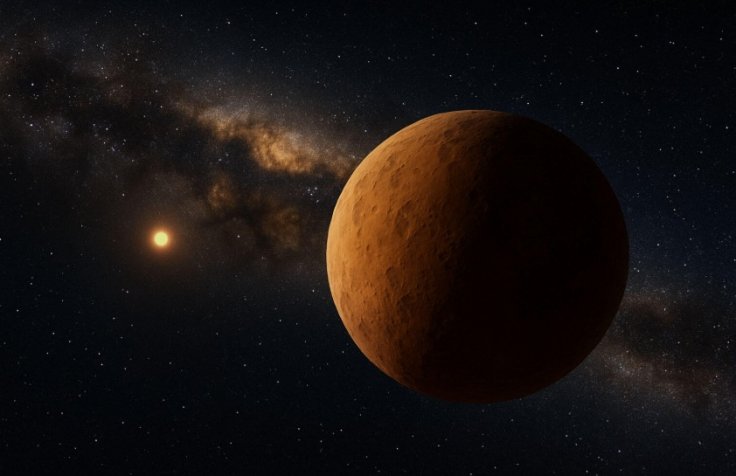
Japanese astronomers have discovered a far-off object orbiting the Sun well beyond Neptune, suggesting that an extraordinary event occurred in the early solar system.
The discovery was made by astronomers using the Subaru Telescope, which is situated atop a dormant volcano in Hawaii.
They observed a tiny object orbiting 252 astronomical units (AUs), which is the furthest away from the Sun. An AU is the average distance between the Sun and Earth. As a tribute to its status as an extreme remnant of the early solar system, scientists named it Ammonite, after a group of extinct marine animals, and officially designated it 2023 KQ14.
In comparison, Pluto is typically around 40 astronomical units away from the Sun, so 2023 KQ14 is a long way off. It takes around 34 hours for light reflected off ammonite to reach Earth from a distance of 23.4 billion miles (37.7 billion kilometers).
First Identified by Astronomers in 2023?
The discovery, which was reported in Nature Astronomy on Tuesday, July 15, is the fourth "Sednoid" to be found. The extremely elongated orbits of this group of far-off, trans-Neptunian objects extend beyond the Kuiper Belt.
Sednoids are not affected by the gravitational field of the Sun because they are not attached to it, in contrast to other objects that orbit the Sun beyond Neptune. In 2003, astronomers made the first Sednoid discovery, which they called Sedna.
Ammonite was first identified by astronomers in 2023 as part of Subaru's FOSSIL (Formation of the Outer Solar System: An Icy Legacy) survey project.
Using the Canada-France-Hawaii Telescope, follow-up observations in July 2024 verified the discovery and showed the orbit of the object. Astronomers were also able to more accurately simulate its orbit after spotting it in 2021 and 2014 archive photos.
The discovery team's computer simulations indicate that ammonite has been in a stable orbit for at least 4.5 billion years. It is only 66 astronomical units away from the Sun when it is at its closest.
Currently, ammonite orbits in a different way than its Sednoid counterparts. Nonetheless, the simulations showed that approximately 4.2 billion years ago, the orbits of the four known Sednoids were remarkably similar.
Planet Nine Theory
This raises doubts about the existence of the Planet Nine theory.
The long-held belief that a massive ninth planet orbits the Sun beyond Neptune is supported in large part by sednoids. It is possible that a ninth, unidentified planet is pulling on the Sednoids because the collection of tiny objects follows an oddly aligned, elongated orbit that cannot be explained by the gravitational pull of the solar system's known planets.
Yukun Huang, a researcher at the National Astronomical Observatory of Japan who carried out the simulations of Ammonite's orbit, said in a statement, "The fact that Ammonite's current orbit does not align with those of the other three sednoids lowers the likelihood of the Planet Nine hypothesis."
"It is possible that a planet once existed in the Solar System but was later ejected, causing the unusual orbits we see today," Huang added.
The estimated width of ammonite ranges from 136 to 236 miles (220 to 380 kilometers). Despite its small size, it is a sign that something much bigger is going on.
Fumi Yoshida, a planetary scientist and co-author of the new study, said, "Ammonite was found in a region far away where Neptune's gravity has little influence. The presence of objects with elongated orbits and large perihelion distances in this area implies that something extraordinary occurred during the ancient era when Ammonite formed."
"Understanding the orbital evolution and physical properties of these unique, distant objects is crucial for comprehending the full history of the solar system," Yoshida concluded.









